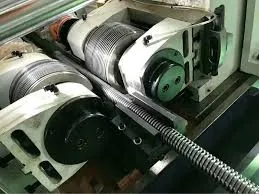
-
 Afrikaans
Afrikaans -
 Albanian
Albanian -
 Amharic
Amharic -
 Arabic
Arabic -
 Armenian
Armenian -
 Azerbaijani
Azerbaijani -
 Basque
Basque -
 Belarusian
Belarusian -
 Bengali
Bengali -
 Bosnian
Bosnian -
 Bulgarian
Bulgarian -
 Catalan
Catalan -
 Cebuano
Cebuano -
 Corsican
Corsican -
 Croatian
Croatian -
 Czech
Czech -
 Danish
Danish -
 Dutch
Dutch -
 English
English -
 Esperanto
Esperanto -
 Estonian
Estonian -
 Finnish
Finnish -
 French
French -
 Frisian
Frisian -
 Galician
Galician -
 Georgian
Georgian -
 German
German -
 Greek
Greek -
 Gujarati
Gujarati -
 Haitian Creole
Haitian Creole -
 hausa
hausa -
 hawaiian
hawaiian -
 Hebrew
Hebrew -
 Hindi
Hindi -
 Miao
Miao -
 Hungarian
Hungarian -
 Icelandic
Icelandic -
 igbo
igbo -
 Indonesian
Indonesian -
 irish
irish -
 Italian
Italian -
 Japanese
Japanese -
 Javanese
Javanese -
 Kannada
Kannada -
 kazakh
kazakh -
 Khmer
Khmer -
 Rwandese
Rwandese -
 Korean
Korean -
 Kurdish
Kurdish -
 Kyrgyz
Kyrgyz -
 Lao
Lao -
 Latin
Latin -
 Latvian
Latvian -
 Lithuanian
Lithuanian -
 Luxembourgish
Luxembourgish -
 Macedonian
Macedonian -
 Malgashi
Malgashi -
 Malay
Malay -
 Malayalam
Malayalam -
 Maltese
Maltese -
 Maori
Maori -
 Marathi
Marathi -
 Mongolian
Mongolian -
 Myanmar
Myanmar -
 Nepali
Nepali -
 Norwegian
Norwegian -
 Norwegian
Norwegian -
 Occitan
Occitan -
 Pashto
Pashto -
 Persian
Persian -
 Polish
Polish -
 Portuguese
Portuguese -
 Punjabi
Punjabi -
 Romanian
Romanian -
 Russian
Russian -
 Samoan
Samoan -
 Scottish Gaelic
Scottish Gaelic -
 Serbian
Serbian -
 Sesotho
Sesotho -
 Shona
Shona -
 Sindhi
Sindhi -
 Sinhala
Sinhala -
 Slovak
Slovak -
 Slovenian
Slovenian -
 Somali
Somali -
 Spanish
Spanish -
 Sundanese
Sundanese -
 Swahili
Swahili -
 Swedish
Swedish -
 Tagalog
Tagalog -
 Tajik
Tajik -
 Tamil
Tamil -
 Tatar
Tatar -
 Telugu
Telugu -
 Thai
Thai -
 Turkish
Turkish -
 Turkmen
Turkmen -
 Ukrainian
Ukrainian -
 Urdu
Urdu -
 Uighur
Uighur -
 Uzbek
Uzbek -
 Vietnamese
Vietnamese -
 Welsh
Welsh -
 Bantu
Bantu -
 Yiddish
Yiddish -
 Yoruba
Yoruba -
 Zulu
Zulu
Innovative Flat Die Thread Rolling Machines for Precision Manufacturing Solutions
The Evolution and Importance of the Flat Die Thread Rolling Machine
In the vast landscape of manufacturing and metalworking, the flat die thread rolling machine stands out as a pivotal technology that has significantly transformed the production of threaded fasteners. This machine is essential for creating high-precision threads on various materials, making it a staple in industries ranging from automotive to aerospace.
The Fundamentals of Flat Die Thread Rolling
At its core, the flat die thread rolling machine employs a cold forming process that reshapes the material into threads without removing any material. Instead of cutting or grinding, this method displaces the metal fibers to form the desired thread profile. The rolling is performed between two flat dies, which are precisely engineered to create the specific thread dimensions required. This process not only enhances the strength and integrity of the threads but also improves surface finish and reduces machining time.
Design and Mechanism
The flat die thread rolling machine typically consists of several key components the feed mechanism, the die holders, and the drive system. The feed mechanism advances the workpiece into the rolling dies, where the actual thread formation occurs. The die holders are precisely adjustable to accommodate different thread sizes and pitches. The drive system, usually powered by electric motors, generates the necessary speed and torque to ensure efficient rolling.
One of the significant advantages of flat die thread rolling machines is their ability to produce high volumes of consistent, high-quality threads. This consistency is crucial in applications where precise tolerances are required, such as in manufacturing bolts, screws, and other threaded fasteners.
Advantages of Using Flat Die Thread Rolling Machines
1. Enhanced Strength The cold rolling process increases the density of the material, which contributes to the overall strength of the threaded component. Threads produced through this method are less likely to become weak or fracture under stress.
famous flat die thread rolling machine

2. Cost Efficiency By eliminating the need for cutting tools and reducing waste material, flat die thread rolling can lower production costs. The quick cycle times associated with this process further enhance profitability.
3. Improved Surface Finish Cold rolling not only shapes the thread but also enhances the surface finish compared to traditional machining methods. This leads to improved performance and lower friction in applications where threaded components are subjected to dynamic loads.
4. Versatility Flat die thread rolling machines can accommodate various materials, including steel, aluminum, brass, and even plastics. This versatility allows manufacturers to adapt to different production requirements and handle a wide range of products.
The Future of Thread Rolling Technology
As industries continue to evolve, the demand for precision-engineered components increases. Advances in technology are likely to lead to further improvements in flat die thread rolling machines. Incorporating automation, digital control systems, and real-time monitoring can optimize the production process, enhance quality control, and reduce downtime.
Moreover, as sustainability becomes an essential factor in manufacturing, flat die thread rolling could play a vital role in reducing waste and energy consumption compared to traditional machining methods. Manufacturers are expected to invest in energy-efficient machinery that aligns with green manufacturing practices.
Conclusion
The flat die thread rolling machine is an indispensable tool in modern manufacturing, combining efficiency, precision, and versatility. As technology continues to advance, this machinery will likely evolve, driving innovation and maintaining its crucial role in the production of high-quality threaded fasteners. With its numerous advantages, the flat die thread rolling process is poised to remain at the forefront of the metalworking industry for years to come.
